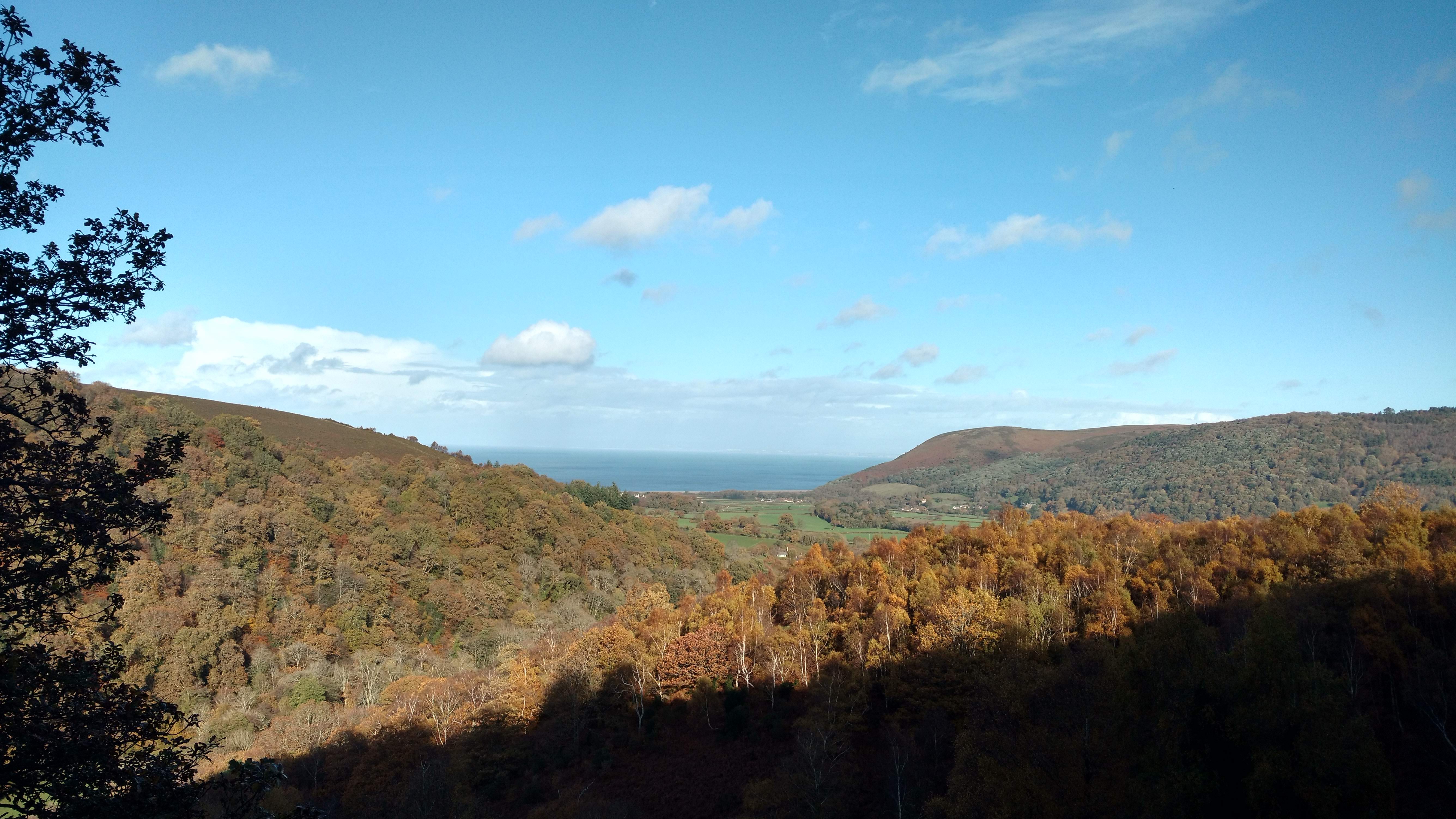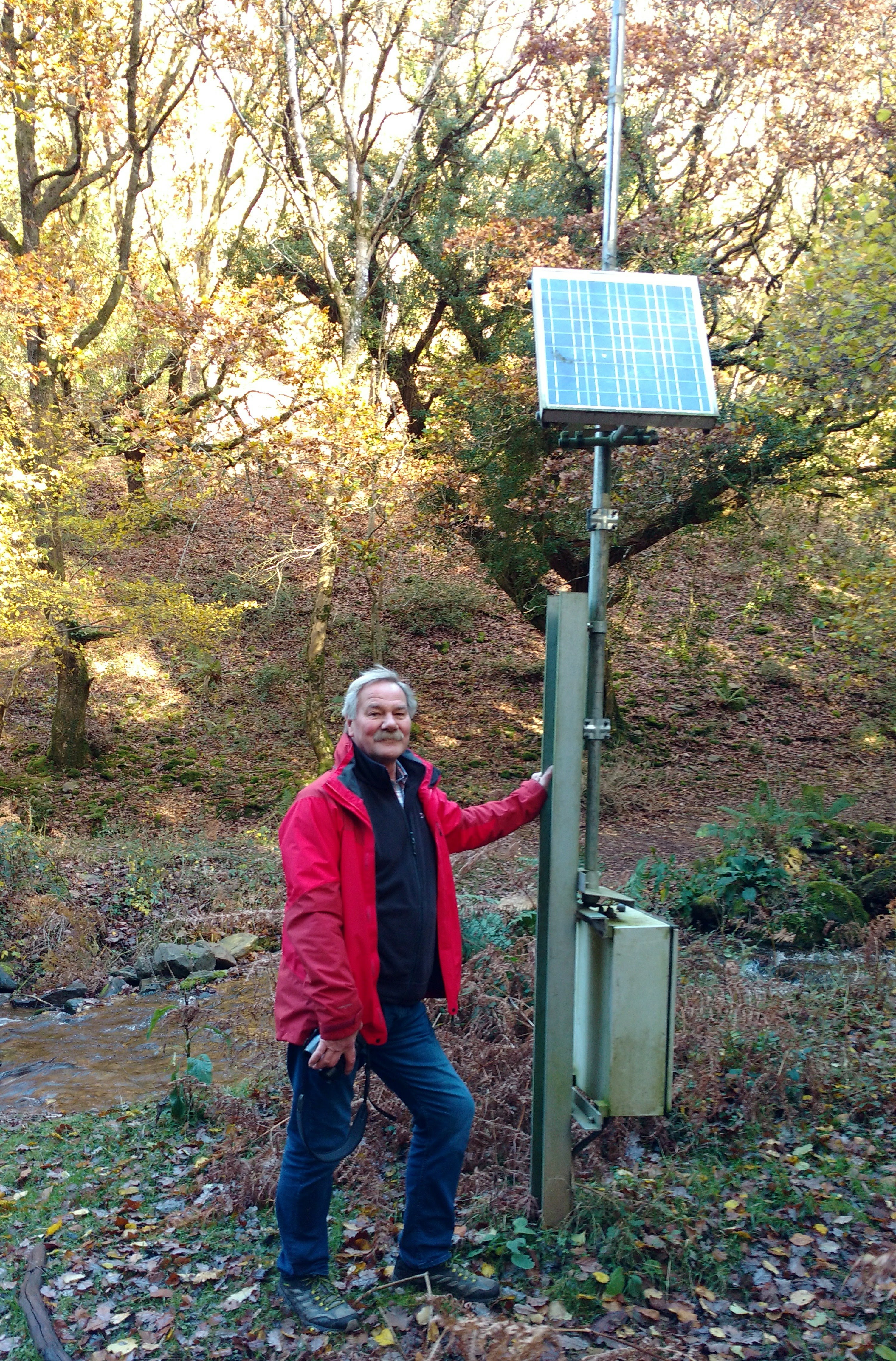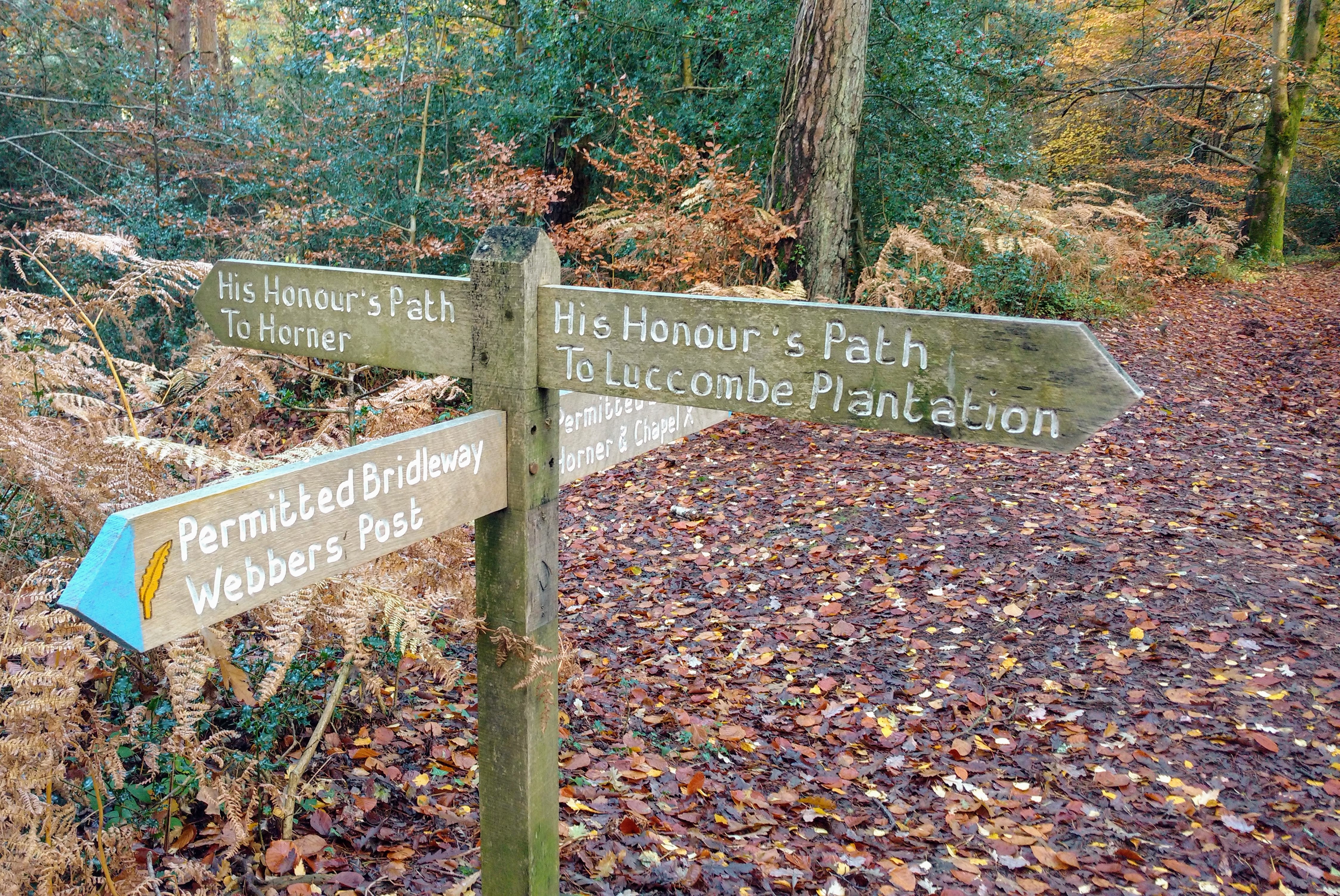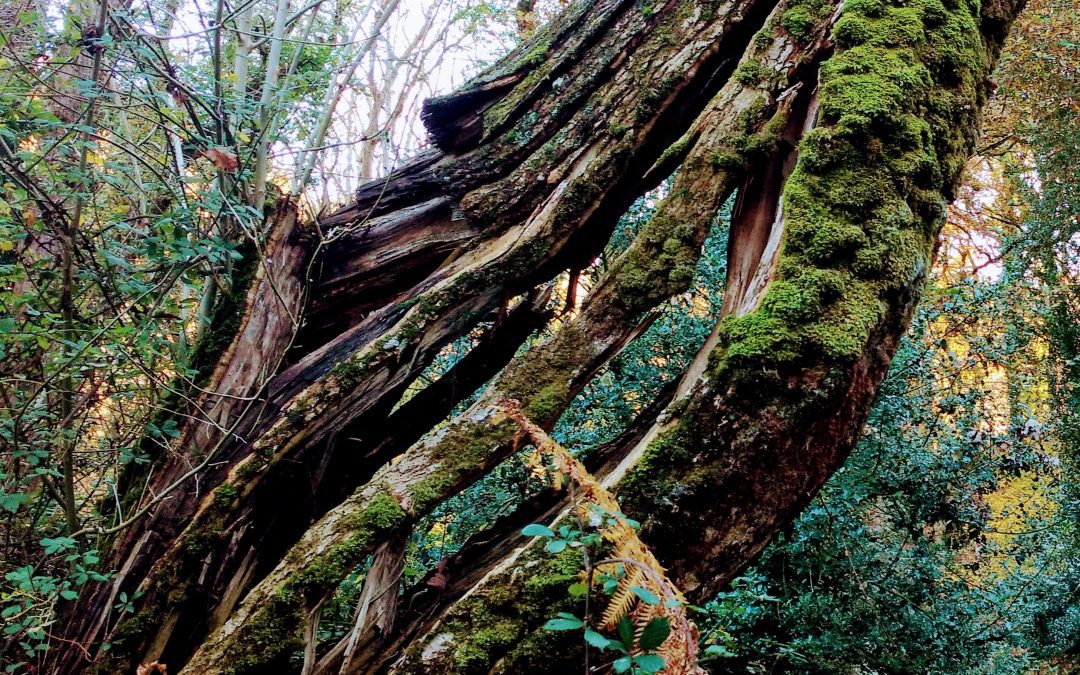How Long Before a Tree Becomes a Friend?
Despite my wanderlust, I find myself envious of those who’ve remained in an area long enough to pull back the curtain; to know all the workings of a place. As I build momentum for a move back to England, I thought it may be helpful to find someone who knows Exmoor like that.
Enter Nigel Hester.
Nigel journeyed to Exmoor via Hampshire, Nottingham, and London. He’s worked for the National Trust for forty years ‒ mostly on Exmoor ‒ currently as the Projects and Grants Manager for the Holnicote Estate. (From the ochre-tinted cottages of Selworthy to the peak of Dunkery Beacon, the Holnicote Estate comprises most of what I call home.) Nigel’s bio says he’s ‘passionate about the countryside, wildlife, music and cooking good food!’ Sounds like someone I should meet.
We shake hands in the car park at Horner, a tiny hamlet at the foot of Horner Wood ‒ an 800-acre section of the Holnicote Estate. Blue skies greet us after days of rain. We head off into what Nigel calls his ‘favourite temperate rainforest’. This is one of my favourite spots too. Horner Water burbles through the predominantly sessile oak woodlands. Cloutsham Ball sits at the top of the steep combe, presiding over dramatic views of Hurlstone and beyond. Dunkery Beacon towers over all. On horseback or on foot, I feel cosily cocooned here. It’s the location of one of my favourite benches in the world.
I thought I knew this place quite well. Turns out I knew little but the trails. Nigel knows every turn in the river, every plant, every historical detail, including the locations of at least two Iron Age hill forts near by. He points to a raised earthen berm topped with mature trees, a testament to the Tudor Age men who rerouted the river to facilitate their iron ore industry. Yes, they moved the river. I didn’t know that. We cross it via a small bridge. Nigel explains the bridge timbers were replaced by iron railway lines, recycled from the West Somerset Railway. He shows me pollarded trees, a pruning technique used for encouraging young growth for fencing and ship-building. I’d never noticed their unusual shape. As we climb, we pass a storm-ravaged oak, its trunk fractured into a stunning natural sculpture. Nigel tells me the year it happened. He conveys an unspoken understanding it is worthy of note, as though the tree is a friend. Oaks here can be upwards of seven hundred years old. I feel a need to spend a few respectful moments with the mangled tree.

As we admire the view across to Wales, I comment on the amount of holly covering the slopes. I don’t remember there being this much of it in the undergrowth. Nigel see it as a rather pesky plant. Since the reduction of sheep grazing in the National Park ‒ a result of agri-environment grants to reduce the impact of trampling and damage to heather moorland ‒ holly has taken over. During research, I discover “Holnicote” may trace its roots to the Anglo-Saxon word for holly ‒ holegn. Therefore, its dominance here may be well established.
I remember more mistletoe. I saw so much of it from the saddle years ago. Nigel tells me there’s less now, but still some near Timberscombe. Anything I notice Nigel can explain, whether it be acidic soil, resulting in fewer native flowering plants, or policy change and its impact on vegetation. He shares more: Greater than 440 species of large fungi can be found in Horner Wood. It’s considered by some the most important woodland for fungi after Windsor Great Park and the New Forest. Horner Wood is also one of the richest bat sites in the United Kingdom, boosting fourteen of the seventeen UK breeding species, including the rare Barbastelle. This may explain how busy Liz Bradshaw is, Nigel’s wife. She’s an expert, regularly consulting on all things bat.

We come to a monitoring station on the banks of the river. I can’t imagine what it’s doing out here. Of course, Nigel knows. He’s part of a research project called the Multi-Objective Flood Management Demonstration Scheme. The equipment at the station collects water flow data every five minutes. Using this information, flooding in the Bossington area ‒ where Horner Water enters the Bristol Channel ‒ has been significantly reduced. Modern science buried deep in the ancient forest. Who knew? I wonder what Tudor Man would think of this technology and if it would have impacted decisions to move the river. Maybe Horner folk considered Bossington folk too far away to worry about.
What’s it like to know a place so well, to be so acutely attuned to its strengths and weaknesses? It comes at a cost, Nigel feels. Not all is smooth sailing in Camelot. His job sees him sharing information with Exmoor residents on controversial and divisive topics, such as Brexit and the banning of hunting. It hasn’t always made him popular. Exmoor, as seemingly remote from Parliament and Europe and US politics as anywhere, still exists alongside current issues. That’s a good wakeup call for me. Escaping world complexities is not what Exmoor is all about.
We discuss the biggest changes over the thirty years I’ve been away. Nigel feels the number of visitors, the extension of the tourist season, and the purposes for which they visit can be viewed as blessings and curses. They change the special qualities of Exmoor. Landscape and wildlife pay a price for successful Exmoor businesses, such as adventure tours, hotels and shops. “Erosion, with its inherent soil loss and water run-off is becoming a real problem,” Nigel says. This translates into a decline in upland wildlife. He continues, “Curlew, ring ouzel, merlin, whinchat, stonechat, grasshopper warbler – all disappeared or rapidly disappearing from Exmoor.” It’s a familiar dilemma in areas of outstanding beauty: the very businesses necessary to sustain an area can damage it. Nigel feels strongly about this. “National Parks should not put recreation above biodiversity.” I promise to remember this.

We pass moss-covered stone walls and the quintessential wooden pathway signs. It’s all breathtakingly beautiful to me. I ask about other places Nigel enjoys. Apparently, Badachro, in Wester Ross, Scotland speaks to him of home as I define it: the place you sleep the best and breathe the deepest. “It reminds me of Exmoor thirty years ago,” he says. “A wild, untamed, wildlife-rich landscape that excites me every time I visit.” Recently announcing his retirement, Nigel plans to spend more time in Scotland. As my face falls – but we haven’t got to the ‘cooking good food’ part of your bio yet! – he assures me Exmoor will still feature prominently in his life. Its diversity of landscapes and wildlife, its cultural richness, including archaeological evidence of 5000-year-old communities, its wild appeal and remoteness ‒ while only two hours from Bristol and Exeter ‒ all keep him passionate about Exmoor.
We exit the trees just above the old watermill and head back to the cars. I cherish a whole new appreciation for Horner Wood, but Nigel makes me realize just how much I don’t know about my ‘home’. Or anywhere for that matter – the curse of the constantly rolling stone. I can tell you Bora Bora is surrounded by surreal turquoise waters, the central California coast, though ravaged by fire and landslides, is still beautiful, that the brutal winter storms of Wisconsin produce stunning natural snow sculptures. I can tell you Bahamian sea water is too warm in August, your feet will get wet in Venice, and New Zealand’s volcanic and glacial topography never fails to impress. I can tell you where they serve a great tres leches cake in Costa Rica and that the Brazilian rainforest is vast. What I can’t give you is depth. I can’t express a connection forged by time. But I want to know Exmoor; to pull back the curtain and learn to greet a tree like an old friend. It will take a while. And that’s okay.
Many thanks, Nigel, for sharing your knowledge, and for your commitment to Exmoor.
For more information on the Holnicote Estate: https://www.nationaltrust.org.uk/holnicote-estate
Facebook: https://www.facebook.com/author.traceygemmell/
Twitter https://twitter.com/TraceyGemmell17


